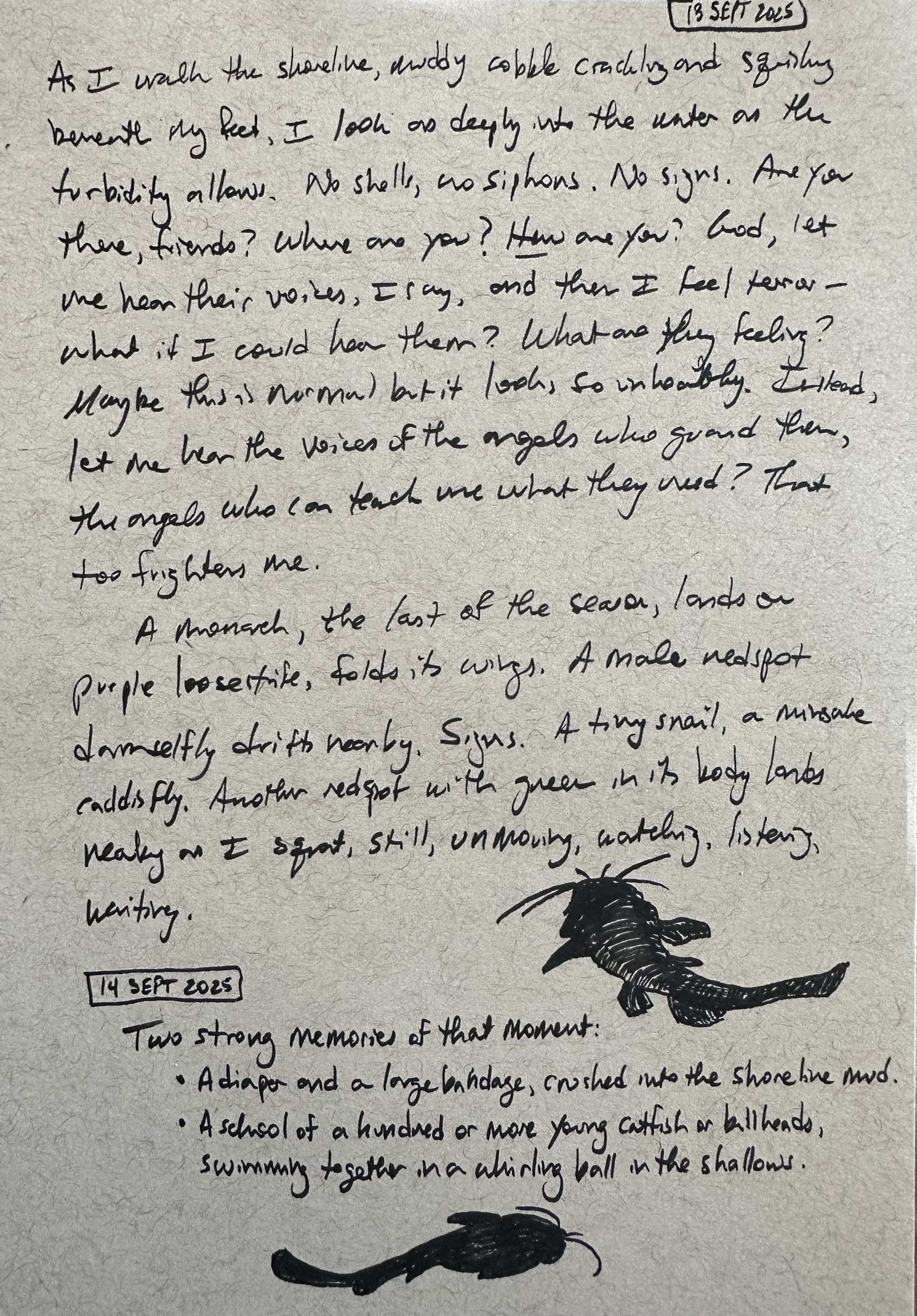Rapture in the Garden
If there is to be a rapture or a second coming, I’d like Christ to find me at work in the garden, caring for what grows there; or in the classroom or lab, caring for my students and what grows in their lives; or holding my wife and children and grandchildren, not worried about the end of the world but living today as though I cared about those who will live tomorrow.
I’ve written a bit about that before. You can search this blog for “religion” and “garden” or you can just click here for a slightly longer reflection on this theme, with photos from my garden: davoh.org/2016/10/1…
Five Points
Experimenting with perspective and five vanishing points.
Lately I’ve wished I studied art in school, but even from an early age I got the impression that art classes were for the artistically talented rather than for those who might benefit from some instruction.
Here’s another shameless sketch being posted into the void as a way of keeping myself accountable as I urge my students to add sketches to their own notes.
The scene is my home office with its jumble of whiteboards and bookshelves. I am seated in the corner rocking chair as I sketch.
One benefit of posting these things is that all the social media now assume I want to see other sketchers, which is far better than the pablum they usually offer.
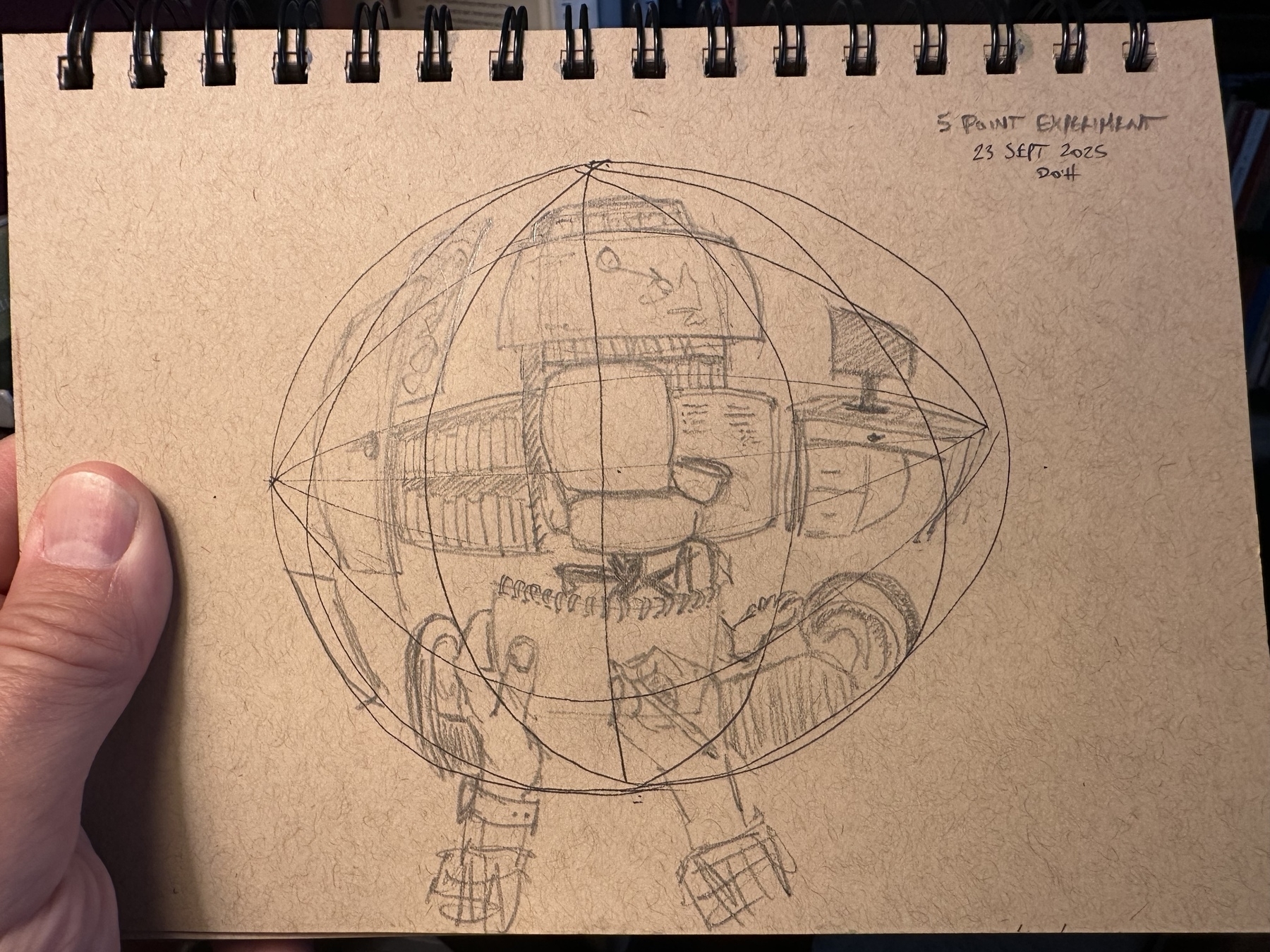
Wonder Journal: agapostemon bee 🐝
Yesterday’s wonder journal sketch of an agapostemon bee. This was a good casual exercise at the end of the day. I don’t worry about getting all the details right. Instead, I try to get a little more right than I did in my last sketch. The improvement comes through repetition, continued practice, and not feeling shame at imperfection. I embrace the imperfection because it’s far better than every sketch that I don’t even begin.

Today’s Insects 🦋🐝
A few more insects from this morning’s run at the state park and from my quick perusal of my gardens.
An Eastern Tailed Blue, (cupido comyntas) one of the Lycaenid butterflies, is about the size of my fingernail, or about 1cm in length. I see more lycaenids where clover grows, fewer where lawns are poisoned to make them uniform with non-native golf course grass. They’re among my favorite insects. I included two photos of the same butterfly to give a sense of scale in comparison with my fingernail, and also to show the differences of coloration between the ventral and dorsal sides of the wing.
An Eastern Comma butterfly, (Polygonia comma), one of the Nymphalidae. I don’t see many of them except at this time of year, and even then I only see a few at this latitude, though I’ve seen more, and more of their near relatives, further north. Today I saw surprisingly many.
An Augochloropsis, or metallic green sweat bee, one of the halictidae. These are solitary bees, as are most of the roughly 4000 species of bees native to North America. Most bees want nothing to do with us and will fly away if you approach to take a photo. These are considerably smaller than honeybees, roughly 1cm long. Despite their bright metallic green coloration, they hide in plain sight and are easy to miss.
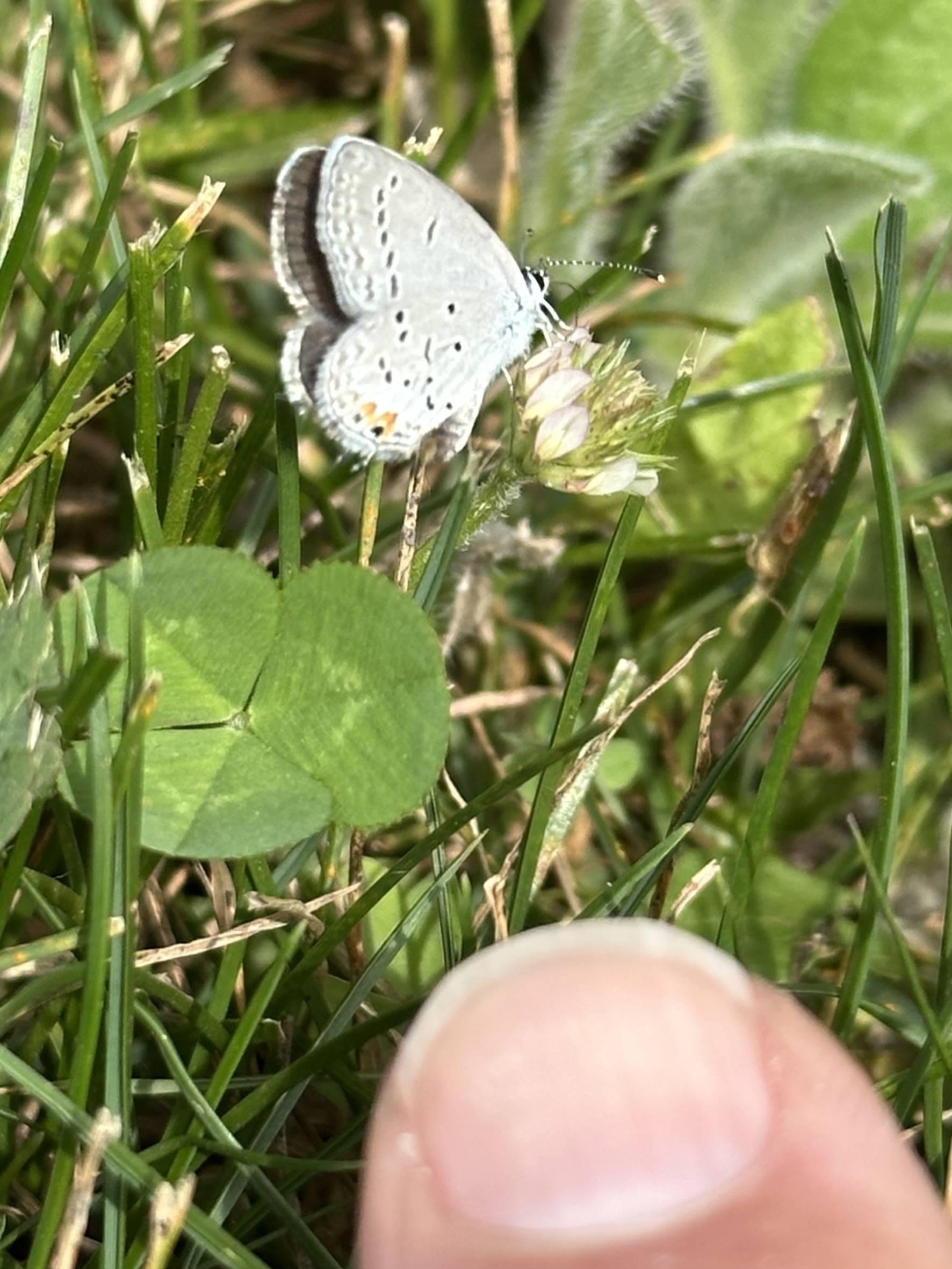

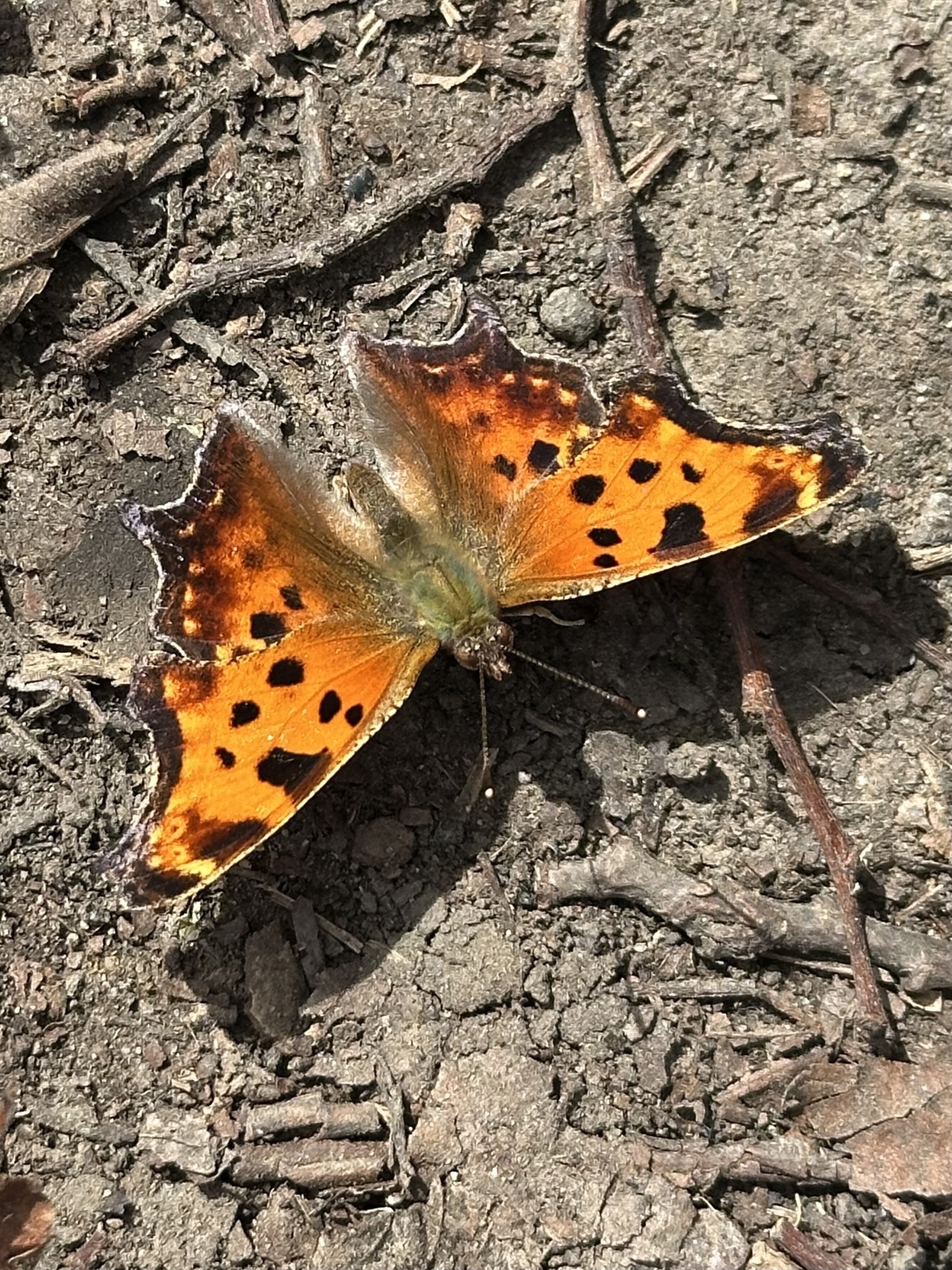
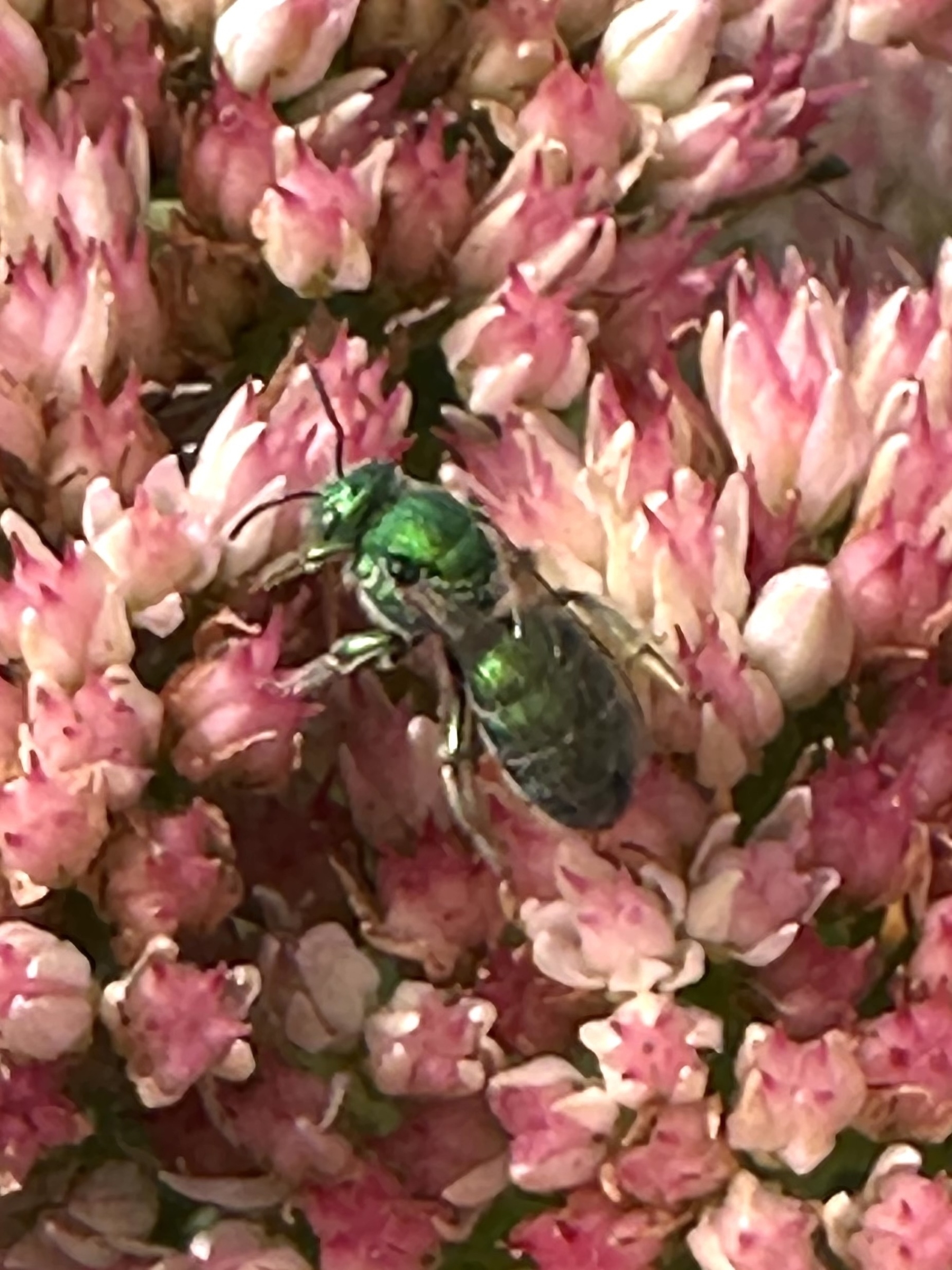
Agapostemon bee on aster.
This is a wonderful time of year, when the asters put out their brightly-colored targets for bees to land on, and the halictid and other small bees feast on the colorful blossoms.
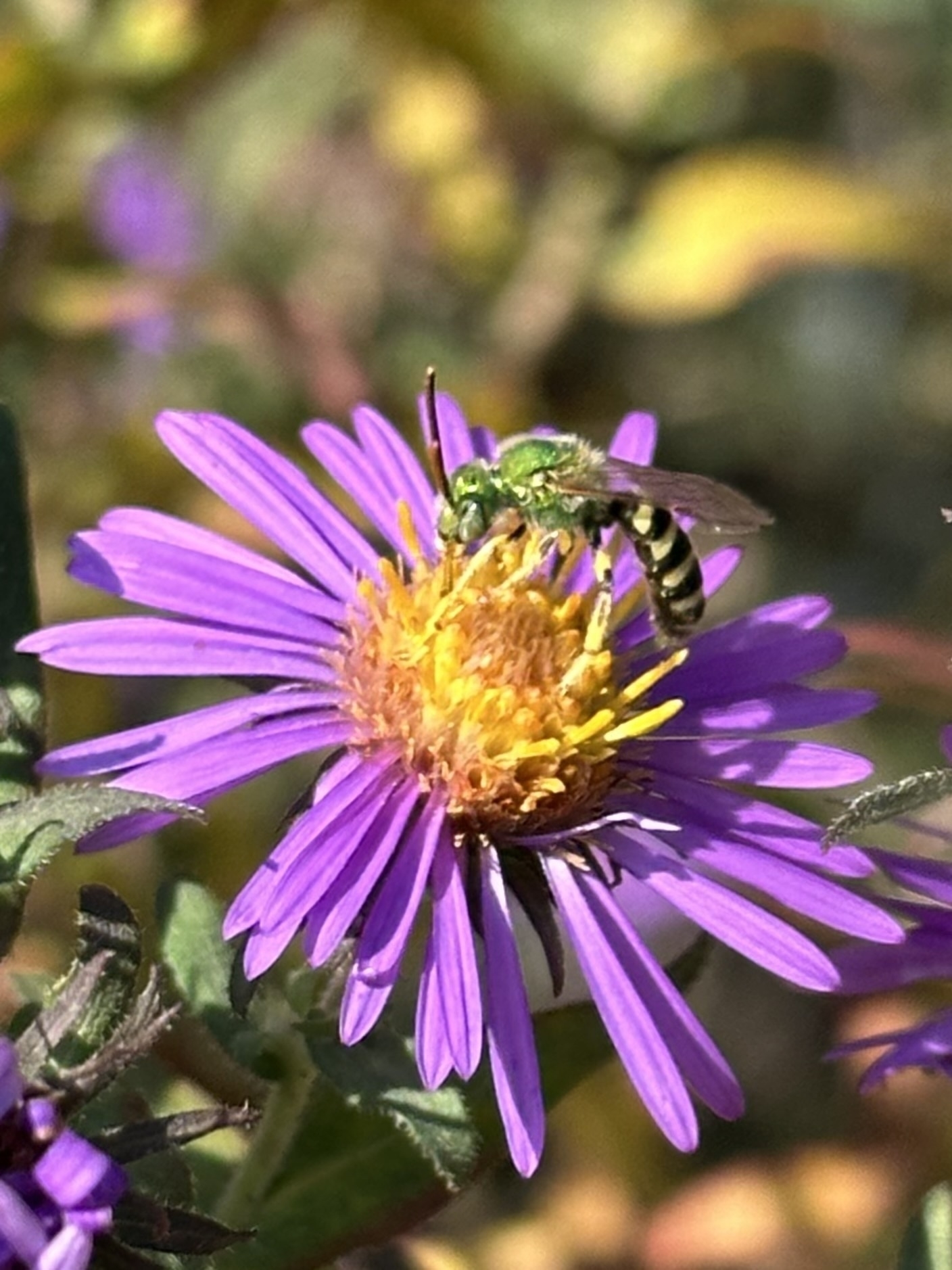
Lady beetles
Lady beetles on campus today. Came across two Siberian elm trees (I think that’s what they are but not completely sure) that were hosting a lady beetle party. Most were Asian lady beetles, which have become very common around here. A few were convergent lady beetles. And I saw two beetles that were maybe 1mm long and very dark. They might be native lady beetles as well since we have several species of lady beetles that are just over 1mm in length. (Microweisea misella, for instance, or a few Scymnus species). Sadly, I did not have my good camera with me so I couldn’t get a good closeup. I did look with a hand lens, but that didn’t help much with species ID. Anyway, you can see one of the small ones next to my fingertip in the photo here. The larger ones were feasting on aphids that were waking down the trunk. I could not see what the smaller ones were eating. It made for a nice stop though, and a few people came over to watch with me. Some small ants (Tetramorium, maybe?) were also patrolling the tree and the lady beetles seemed to ignore them. I also saw some invertebrates so small my hand lens couldn’t magnify them enough for me to even identify the family. Lots of life on those two trees!
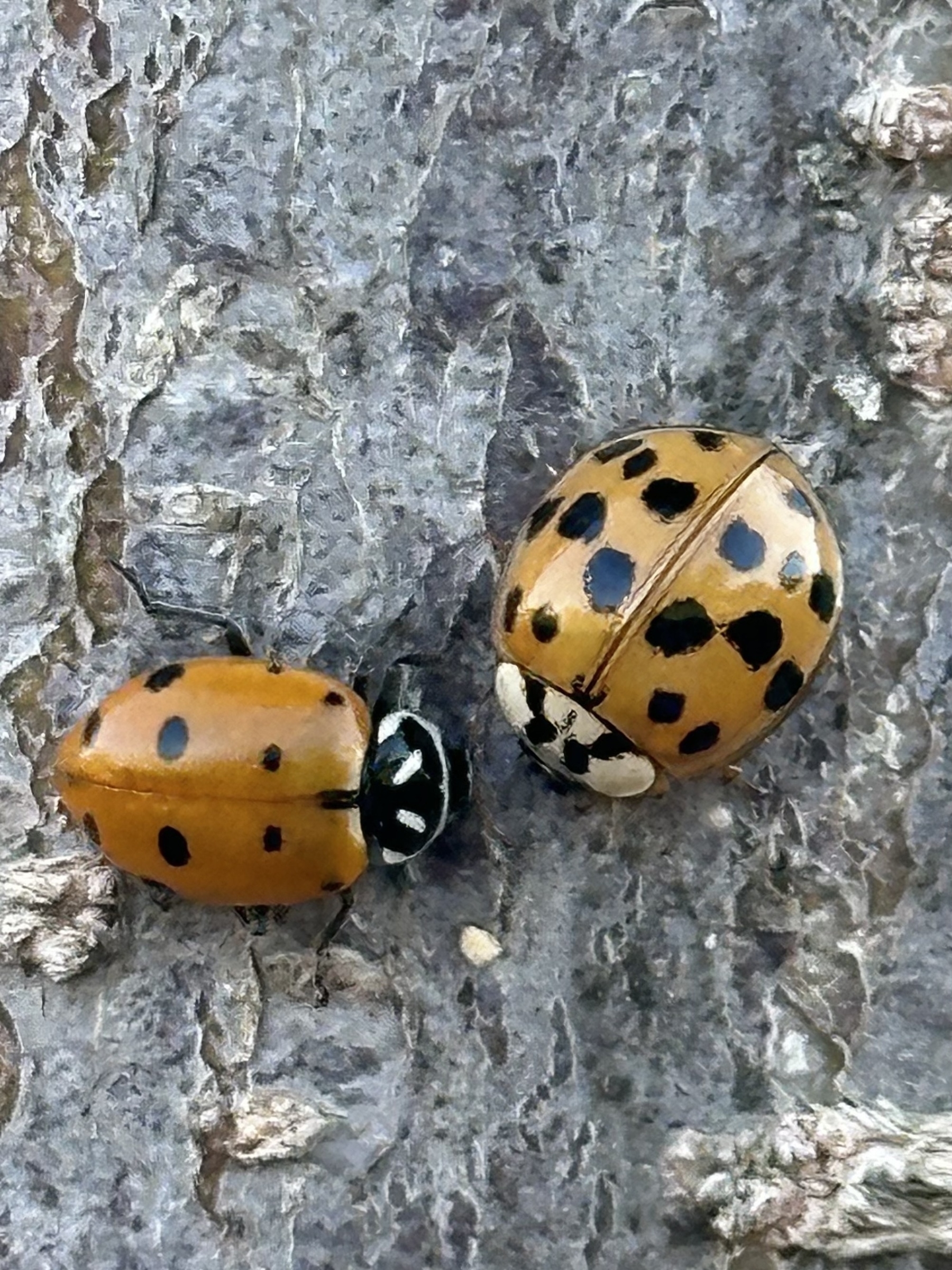
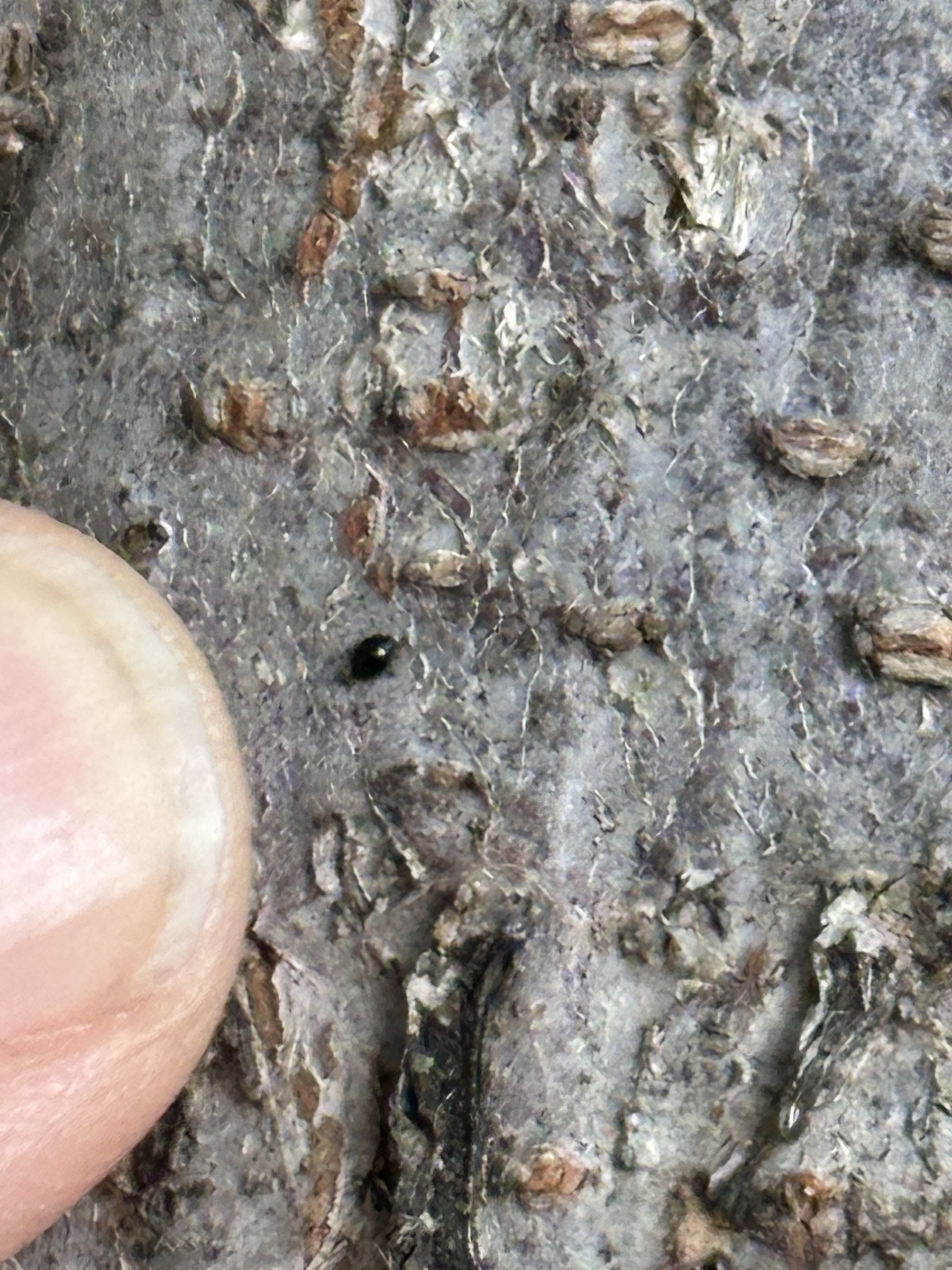
Sitting in the garden, coffee in the shade, the birds singing, the low hum of bees abuzz, the Wild Four O’Clocks continuing to bloom, a hundred small butterflies and beetles feasting on sunflowers.
Cutting down the cattails
This week my environmental philosophy class (which meets outdoors) has been studying the campus pond and its connection to the river. While I was teaching today the students pointed out that workers were cutting down the cattails. This happened as we were talking about the benefits of cattails! So after class I stayed and did a quick painting of the scene.
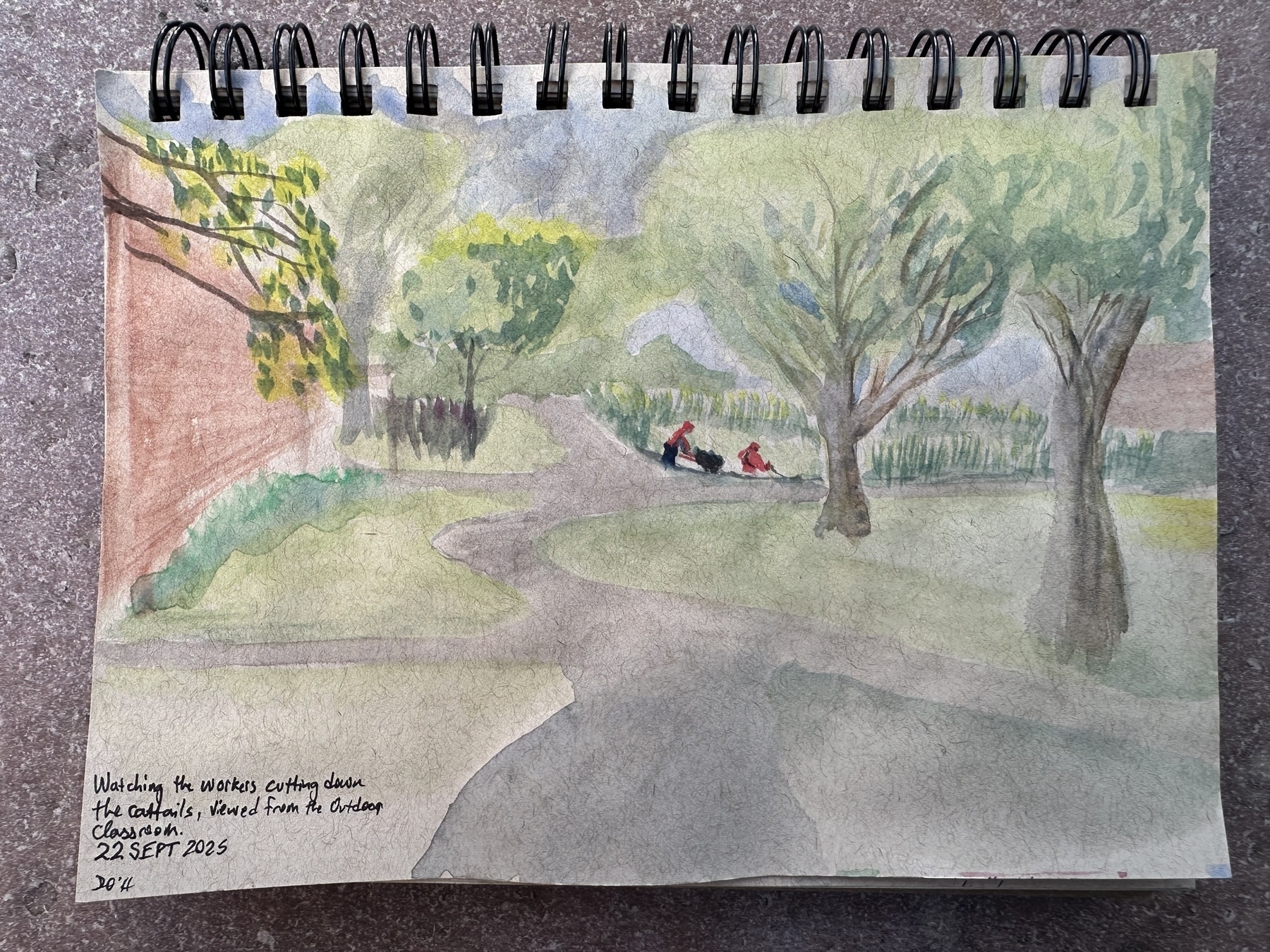
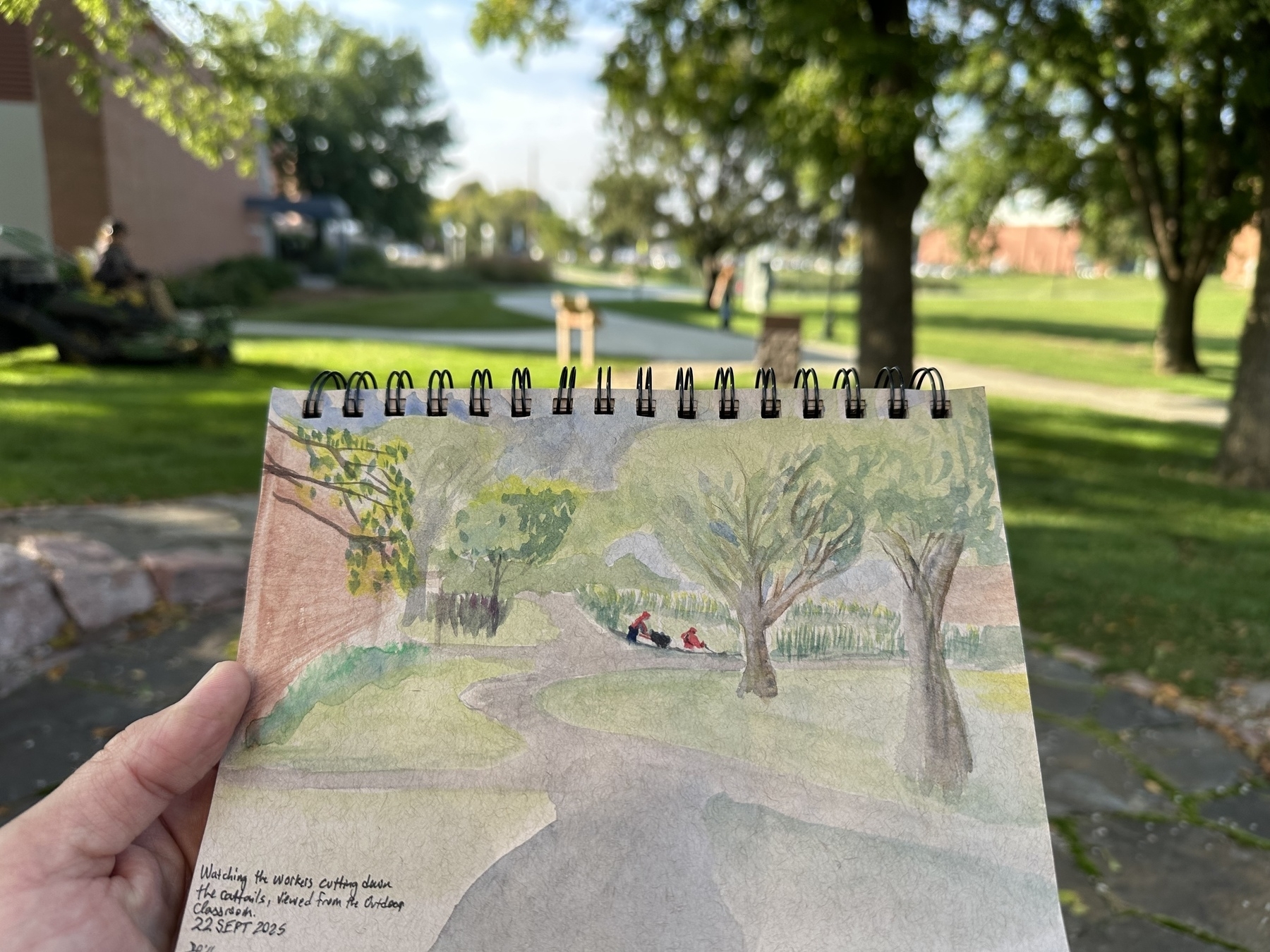
Note for a longer essay:
Students often complain that Plato is annoying and does not give clear doctrines.
Philosophy professors have also long disliked his writing, and sometimes try to distill his real meaning from his dialogues.
But the dialogue is the point.
Jalysus sketch
I see them all over my biennial bee blossom plants, and on the nicotiana rustica as well.
But even when I look for them they’re easy to miss. They blend into the plant, and look almost like flower buds.
They move slowly until they decide to fly, and then — whoosh! They’re gone.
I love their spindly antennas, spider-web thin with tips that look like drops of water.

A few native plants in a square-meter garden by the sidewalk have become a roadside banquet in a pollinator food desert. Salvia, monarda, helianthus, aster, ironweed, vervain, silphium, liatris, clover, and a few others.
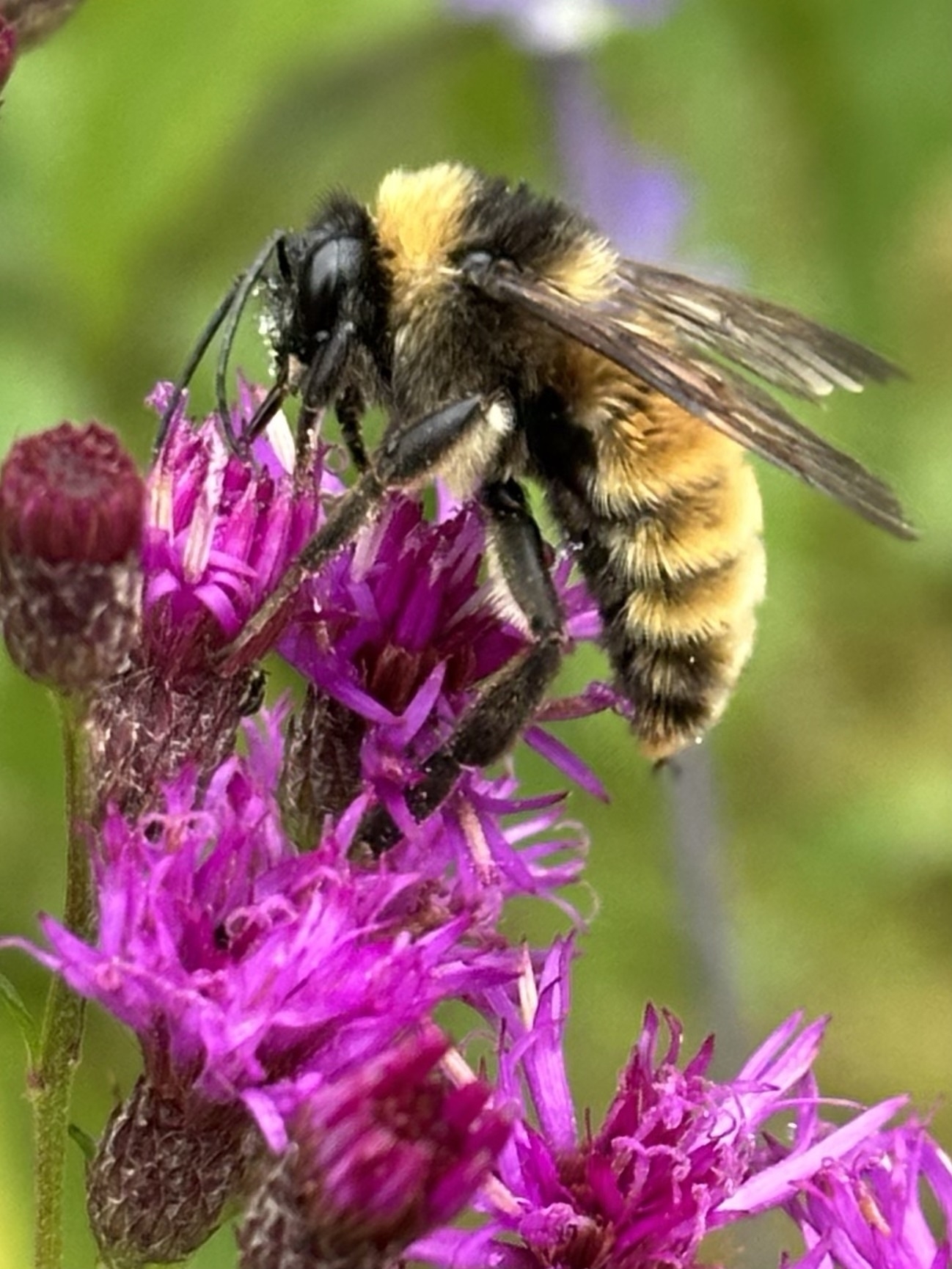
I wish I could assign more books, and that my students and I had more time to sit quietly to discuss them. But I assign a few, and I ask them to read them slowly with me. Their lives increasingly seem to be lives of haste, and care.

"Measure What Matters"
Not everything needs to be measured. And sometimes the measuring changes the situation. In education when we “teach to the test” or assess the things we can quantify easily, then everything else vanishes from view. Ask any student how they’re doing in school and they’ll answer with a report of their grades. Which does not answer the question. How was that first kiss? That first dance? The sunset over the ocean? The moment of calm? Yes, you can measure parts of them. No, your measurement won’t capture what matters.
Reading Thucydides
Last year I led an online discussion of Thucydides. It stopped when I got busy with other pursuits. Thinking of starting that up again, with two tracks: One group that starts at the beginning of Thucydides; another that picks up where the first group left off and reads all the other texts written in the context of the Pelopponesian War.
Addendum: I’d like at least one of these groups to meet in a quiet library, or an internet-free cabin in the wilderness, or some other place where we would be uninterrupted, could talk face-to-face. The feel of paper in our hands, pens and notepads on the table. The smell of books. A shared meal, and glasses raised in salute of good questions, thoughtful insight, words that call for moments of silent reflection.
No grades, no reporting afterwards. Just better familiarity with ideas that have changed our world, and, best of all, new friends.
Pensées
Thoughts as I prepare for today’s classes:
- Philosophy occurs everywhere. Sometimes we notice it.
- It occurs in a historic and cultural context. Contexts require some familiarity. Familiarity takes time.
- The more we understand that context, the better we understand the philosophy.
- Philosophy (the love of wisdom) begins in wonder. There are many ways to quench the flame of wonder; how can we kindle it again?
- The love (philia) of wisdom (sophia) is friendship, mutual flourishing.
- How do we foster the flourishing of wisdom, even as we hope wisdom will help us to flourish?
Wonder journal: cup plant
Today’s wonder journal page.
Do the leaves of a cup plant (silphium perfoliatum) give it any advantage? What about when they fill with rain, or with seeds, or both?
Ponderings from the garden. I take some time to observe, and to take note of something I don’t know. The notebook then becomes a source of topics to do more research about.
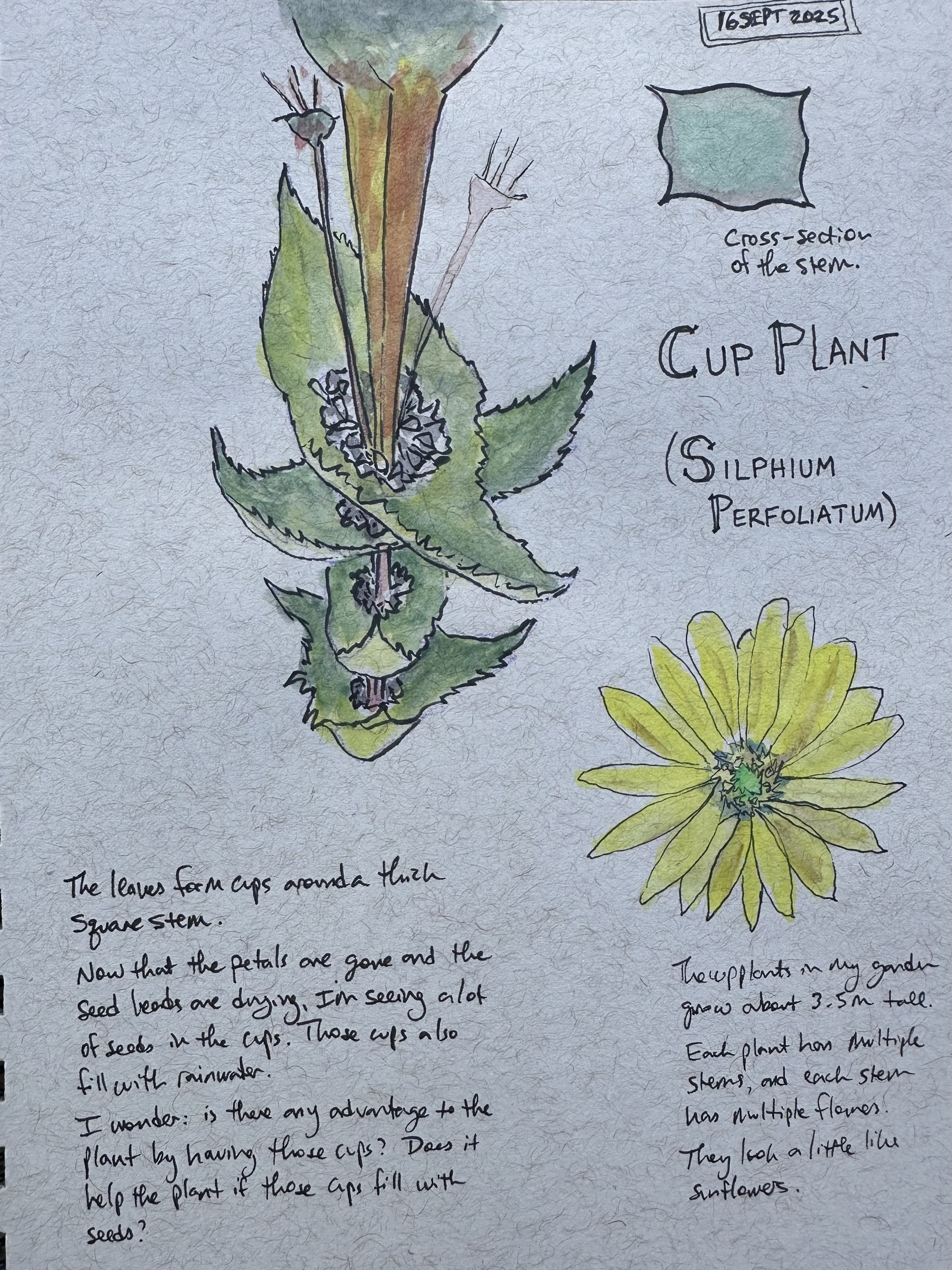
Turkey Vultures
This morning as I taught my environmental philosophy class in one of the campus gardens the students were looking over my shoulder. So after class I turned to see what they were watching — and sketching. And then I made my own sketch of the turkey vultures that had been flying in from downtown where they roost each night.
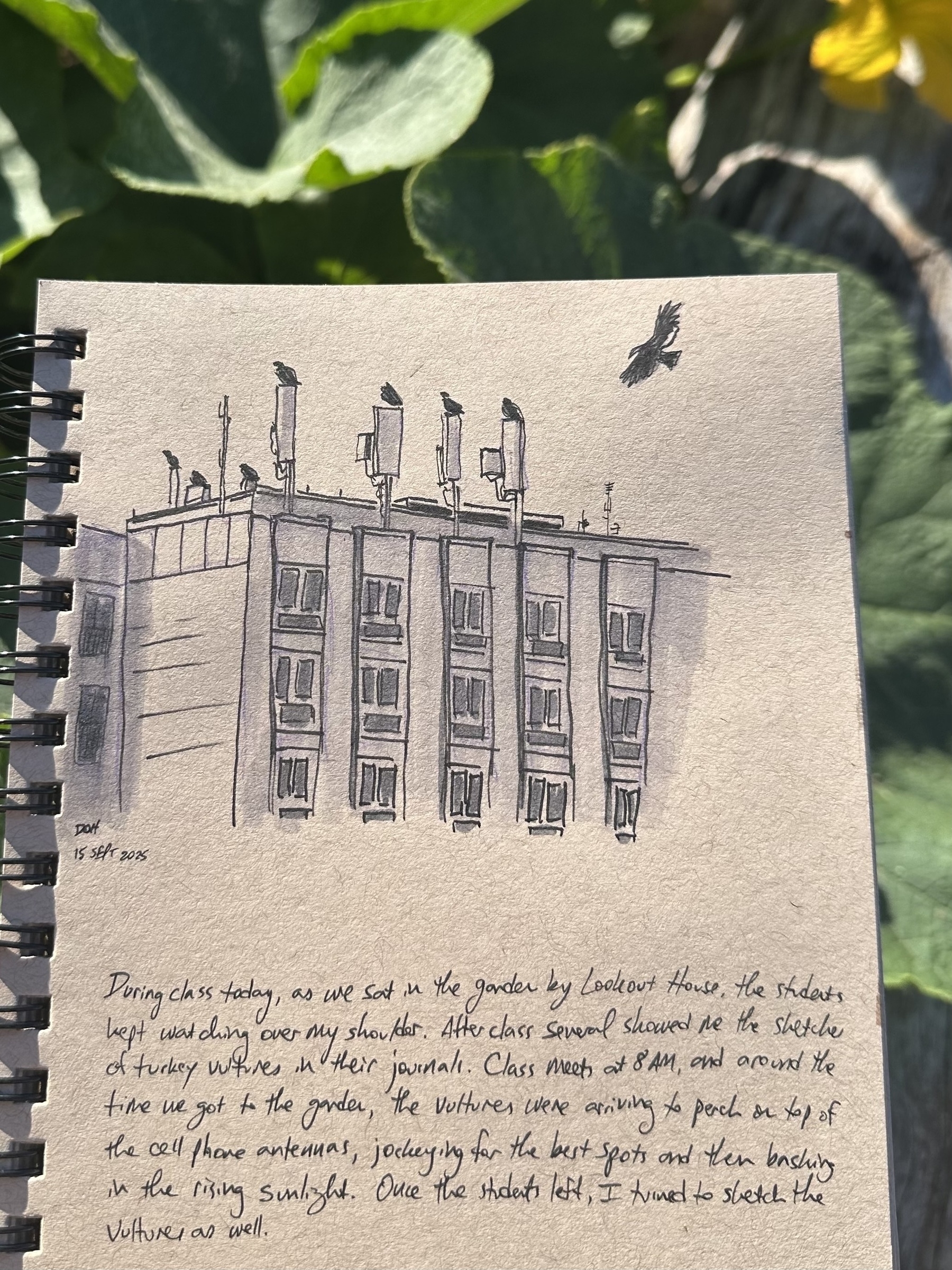
Lots of teachers feeling stress these days.
But you know what’s great about teaching? Watching students gladly learning new things.
Heron
Heron on Skunk Creek in Sioux Falls yesterday. I painted it this afternoon from a photo I took yesterday while surveying for mussels.
If the sketch turned out well, I have John Muir Laws to thank. Took his Wild Wonder class this summer in California and it was remarkably helpful. He and Robin Lee Carlson, Mark Simmons, and Nina Sokolov are good and generous teachers.
Didn’t find any live mussels, and only a few fragments of dead shells, but I’m still hopeful. Life finds a way. 🎨

The Love of Wisdom Begins in Wonder
Part of my “wonder journal” — a practice I am asking my environmental philosophy students to engage in this semester. Since I am asking them to do it, I am doing it as well. “The love of wisdom begins in wonder,” says Aristotle.
It is a little cumbersome, but I carry a bag with notebooks, pens and watercolors, and usually a field guide and a book or two — poetry, science, philosophy — and I allow myself (force myself, sometimes) to stop and wonder at something in nature, and to turn that wonder into words and images.
